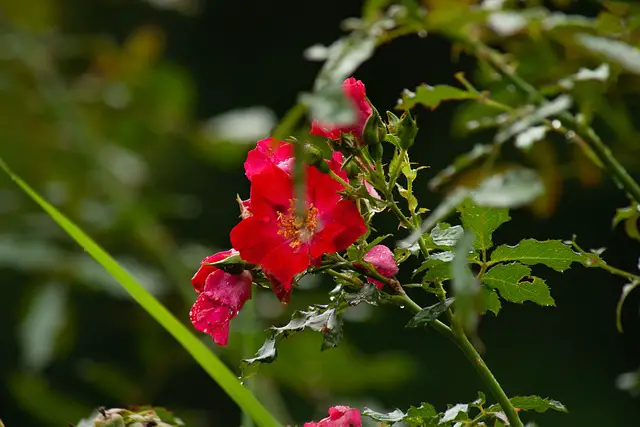Stingray plants are known for their striking foliage that resembles the shape of a marine creature commonly known as a stingray. However, when these plants start to droop, it can be a cause for concern for many plant owners.
There can be several reasons why a stingray plant may droop, and it is important to understand the underlying causes to prevent further damage.
Understanding the natural habitat and ideal conditions for stingray plants is crucial in caring for them. These plants thrive in bright, indirect light and require temperatures between 65°F and 85°F. They are sensitive to temperature fluctuations, which can lead to leaf drooping if not managed.
Additionally, stingray plants love humid spaces and require well-draining soil to prevent root rot. Overwatering can also cause the plant to droop, so it is important to water stingray plants only when the top inch of soil is dry.
Key Takeaways on Stingray Plant Drooping
- Stingray plants require bright, indirect light and temperatures between 65°F and 85°F to thrive.
- Overwatering and temperature fluctuations can cause stingray plants to droop.
- Proper soil drainage, humidity levels, and watering practices are crucial in caring for stingray plants.
Also don’t miss:
Understanding Stingray Plants
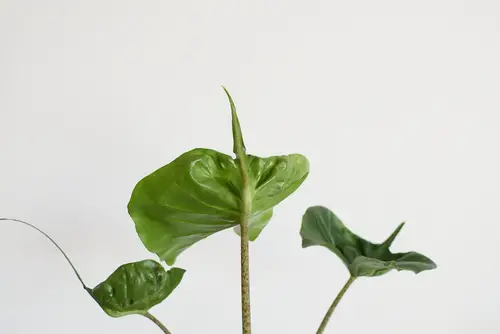
Stingray plants, also known as Alocasia macrorrhiza ‘Stingray,’ are a type of tropical plant that is native to Southeast Asia. They are a popular plant among houseplant enthusiasts due to their unique, eye-catching appearance. The plant gets its name from its leaves, which resemble the wings of a stingray.
Stingray plants are known for their large, leathery leaves that are shaped like a stingray. The leaves are dark green in color and have a glossy finish. They are also pointed upwards and inwardly curved, giving them a unique appearance. The plant also has a whip-like tail that grows from the center of the leaves, adding to its distinctive look.
One of the key things to keep in mind when caring for a Stingray plant is that it requires bright, indirect light to thrive. If the plant does not receive enough light, it may start to show signs of stress, such as drooping leaves. It is also important to make sure that the plant is not exposed to direct sunlight, as this can cause the leaves to burn.
Stingray plants prefer to be kept in a humid environment, so it is a good idea to mist the leaves with water regularly. The plant also needs to be watered regularly, but it is important not to overwater it. Overwatering can cause the roots to rot, which can be fatal for the plant.
In terms of soil, Stingray plants prefer a well-draining soil that is rich in organic matter. They also benefit from the occasional application of fertilizer during the growing season. When it comes to pruning, it is important to remove any dead or damaged leaves as soon as possible to prevent the spread of disease.
Natural Habitat of Stingray Plants
Stingray plants, also known as Alocasia Stingrays, are native to Southeast Asia, where they grow in tropical rainforests. They are part of the Araceae family, which includes other popular houseplants such as the Monstera and Philodendron.
In their natural habitat, Stingray plants grow under the canopy of tall trees, where they receive dappled sunlight and high humidity. The soil in the rainforest is well-draining, but retains moisture, which is essential for the growth of Stingray plants.
These plants thrive in warm temperatures between 65°F and 85°F and are sensitive to temperature fluctuations. They can also grow up to 3 feet tall in their natural habitat.
Stingray plants are found in countries such as Thailand, Indonesia, and Malaysia. They are often grown for their ornamental value and are a popular houseplant in many parts of the world.
Ideal Conditions for Stingray Plants
Stingray plants are tropical plants that require specific conditions to thrive. Here are some ideal conditions for growing healthy Stingray plants:
1. Lighting

Stingray plants prefer bright, indirect light. Direct sunlight can burn the leaves, causing them to droop and turn brown. An east or south-facing window is ideal for these plants when grown indoors. Outdoors, Stingray plants can grow well provided they are sheltered from the midday sun.
If the plant is not getting enough light, it may start to droop. In this case, move it to a brighter spot or supplement with artificial light.
2. Watering
Stingray plants like to be kept evenly moist, but not wet. Overwatering can lead to root rot, which can cause the plant to droop. Check the soil regularly and water when the top inch is dry to the touch.
It’s important to use room temperature water when watering Stingray plants. Cold water can shock the roots and cause the plant to droop.
3. Temperature and Humidity
Stingray plants prefer warm temperatures between 65°F and 85°F. They are sensitive to temperature fluctuations, which can lead to leaf drooping if not managed.
Stingray plants also prefer high humidity levels. If the air is too dry, the leaves may start to droop. To increase humidity, you can place a tray of water near the plant or use a humidifier.
4. Soil and Fertilizer
A well-draining soil with good aeration is ideal for Stingray plants. A mixture of peat moss, vermiculite, and perlite is a great choice for these plants.
Stingray plants do not require a lot of fertilizer, but you can feed them once a month during the growing season with a balanced fertilizer.
Soil Requirements
The soil requirements for the Alocasia Stingray plant are crucial to its overall health and growth. It is important to choose a well-draining soil mixture that allows for adequate drainage to prevent waterlogging and root rot.
A good soil mixture for the Alocasia Stingray plant should consist of a combination of peat, perlite, and well-draining soil. The peat provides essential nutrients and moisture retention, while the perlite helps with drainage and aeration. Well-draining soil is also important to ensure that water does not accumulate in the pot, which can lead to root rot.
The pH level of the soil should be between 5.5 and 6.5, which is slightly acidic. This is because the Alocasia Stingray plant prefers slightly acidic soil, and a pH level outside of this range can cause nutrient deficiencies and other problems.
It is important to avoid using heavy or compacted soil, as this can hinder root growth and lead to poor drainage. The soil should be loose and airy to allow for proper root development and nutrient uptake.
Watering Stingray Plants

Watering is a crucial aspect of caring for a Stingray plant. Overwatering or underwatering can cause the leaves to droop, turn yellow, or even die. Therefore, it is essential to water the Stingray plant correctly to keep it healthy.
How Often to Water
The frequency of watering a Stingray plant depends on several factors, such as the size of the pot, the type of soil, and the environment. In general, it is best to water the plant when the top inch of the soil feels dry to the touch. However, it is important not to let the soil dry out completely, as this can cause stress to the plant.
How Much to Water
When watering a Stingray plant, it is important to avoid both overwatering and underwatering. Overwatering can lead to root rot, while underwatering can cause the leaves to wilt and turn yellow.
To avoid these issues, water the plant until the water comes out of the drainage holes at the bottom of the pot. This ensures that the soil is evenly moist but not waterlogged.
Water Quality
The quality of water used to water a Stingray plant is also important. Ideally, use room-temperature water that has been allowed to sit for a day or two to allow any chlorine or other chemicals to evaporate. Alternatively, use filtered or distilled water to avoid any potential issues with tap water.
Signs of Overwatering and Underwatering
It is important to monitor the Stingray plant for signs of overwatering or underwatering. Overwatering can cause the leaves to turn yellow, mushy, or fall off, while underwatering can cause the leaves to wilt and turn brown.
If the plant is showing signs of overwatering, reduce the frequency of watering and ensure that the soil is well-draining. If the plant is showing signs of underwatering, increase the frequency of watering and ensure that the soil is retaining moisture.
Temperature and Humidity Needs
Alocasia Stingray is a tropical plant that thrives in warm and humid conditions. It is important to maintain the right temperature and humidity levels to keep the plant healthy and prevent it from drooping.
Temperature
The ideal temperature range for Alocasia Stingray is between 65°F (18°C) to 85°F (29°C). It is important to avoid sudden temperature changes as this can lead to temperature stress and damage to the plant. Therefore, it is best to keep the plant in a warm environment and avoid cold drafts.
Humidity
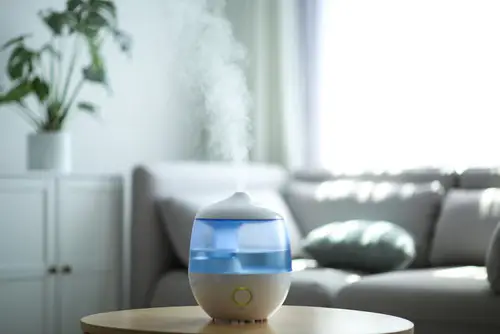
Alocasia Stingray needs high humidity levels to thrive. The plant prefers humidity levels between 60% to 80%. Low humidity can cause drooping leaves, while high humidity can lead to fungal diseases. Therefore, it is important to maintain optimal humidity levels.
One way to increase humidity levels is by using a humidifier. Alternatively, misting the plant with water can also help increase humidity levels. It is important to avoid misting the leaves directly as this can lead to fungal diseases.
Seasonal Changes
During winter, the air tends to be drier, and the humidity levels in the house may drop. Therefore, it is important to monitor the humidity levels and use a humidifier or other methods to maintain optimal humidity levels.
During summer, the air tends to be more humid, and the plant may need less frequent watering. It is important to monitor the soil moisture levels and adjust watering frequency accordingly.
In spring, the plant may start to produce new leaves. It is important to maintain optimal humidity levels and provide the plant with adequate nutrients to support growth.
Caring for Stingray Plants
Stingray plants are a unique and attractive addition to any indoor or outdoor garden. They are relatively easy to care for, but they do require some attention to thrive. Here are some tips on how to care for your Stingray plant.
1. Pot Size and Soil
When it comes to pot size, Stingray plants prefer to be slightly root-bound. A pot that is too large can lead to overwatering and root rot. A good rule of thumb is to choose a pot that is only slightly larger than the root ball of the plant.
A well-draining soil mix is also important for Stingray plants. A mix of peat moss, perlite, and sand will provide good drainage while retaining moisture.
2. Light and Temperature
Stingray plants prefer bright, indirect light. Direct sunlight can scorch the leaves, so it’s best to place them near an east or south-facing window. Outdoors, they can grow well if they are sheltered from the midday sun.
Stingray plants prefer temperatures between 65°F and 85°F, and they are sensitive to temperature fluctuations, which can lead to leaf drooping if not managed.
3. Watering and Fertilizing

Stingray plants prefer to be kept consistently moist but not waterlogged. Overwatering can lead to root rot and drooping leaves. It’s best to allow the top inch of soil to dry out before watering again. Stingray plants benefit from regular fertilization during the growing season. A balanced liquid fertilizer can be applied every two weeks.
4. Air Circulation
Good air circulation is important for Stingray plants. Stagnant air can lead to fungal diseases and insect infestations. A small fan can be used to provide gentle air movement around the plant.
5. Pruning and Propagation
Stingray plants do not require much pruning, but they can benefit from the occasional removal of dead or yellowing leaves. Propagation can be done by taking stem cuttings and rooting them in water or soil.
Identifying and Treating Pests and Diseases
Stingray plants can be susceptible to pests and diseases, which can cause drooping leaves and other issues. It is important to identify and treat these problems as soon as possible to prevent further damage to the plant.
Identifying Pests
Common pests that can affect stingray plants include spider mites and mealybugs. Spider mites are tiny pests that can cause discoloration and browning of the leaves. Mealybugs, on the other hand, are small white insects that can cause a sticky residue on the leaves and stems.
To identify pests on your stingray plant, it is important to inspect the leaves and stems regularly. Look for signs of discoloration, browning, or a sticky residue. You may also see the pests themselves, which can be small and difficult to spot.
Treating Pests
If you have identified pests on your stingray plant, there are several treatment options available. First, you can try removing the pests manually by wiping the leaves and stems with a damp cloth. You can also use insecticidal soap or neem oil to kill the pests.
It is important to treat the plant as soon as possible to prevent further damage. If the infestation is severe, you may need to remove the affected leaves or even the entire plant.
Identifying Diseases
Stingray plants can also be susceptible to diseases, which can cause drooping leaves and other issues. Common diseases include root rot and leaf spot.
Root rot is caused by overwatering and can cause the roots to rot, leading to wilting and browning of the leaves. Leaf spot, on the other hand, is caused by a fungal infection and can cause brown spots on the leaves.
Treating Diseases
To treat root rot, it is important to reduce watering and improve drainage. You can also use a fungicide to kill the fungus and prevent further damage.
To treat leaf spot, you can remove the affected leaves and use a fungicide to prevent further infection. It is important to keep the plant in a well-ventilated area and avoid getting water on the leaves, as this can promote fungal growth.
Propagation of Stingray Plants

Stingray plants can be propagated through division. It is best to divide the plant during its active growth period in the spring or summer.
To propagate a stingray plant, first, remove the plant from its pot and gently shake off the soil. Then, carefully separate the rhizomes with a clean and sharp knife. Each division should have at least one healthy rhizome and a few leaves.
Next, plant the divisions in separate pots with well-draining soil. Keep the soil moist but not waterlogged and place the pots in a bright but indirect light.
It is important to note that newly propagated stingray plants may take some time to establish themselves. It is best to avoid fertilizing the plant until it has developed a strong root system.
Potential Risks and Toxicity
While the Alocasia Stingray plant is a beautiful addition to any home, it’s essential to be aware of the potential risks and toxicity associated with the plant.
Firstly, it’s important to note that the Alocasia Stingray plant is toxic to both humans and animals. The plant contains calcium oxalate crystals, which can cause skin irritation, vomiting, and other symptoms if ingested. Therefore, it’s important to keep the plant out of reach of pets and children.
If you come into contact with the plant’s sap or juice, you may experience skin irritation, including itching, redness, and swelling. It’s best to avoid touching the plant altogether, or to wear gloves when handling it.
Moreover, if you suspect that your pet has ingested any part of the plant, it’s important to seek veterinary attention immediately. The symptoms of ingestion can vary depending on the animal and the amount consumed, but may include vomiting, diarrhea, and difficulty breathing.
Common Issues and Solutions
Stingray plants are known for their unique and attractive foliage. However, they can become droopy and unappealing if not cared for properly. Here are some common issues and solutions to help you keep your Stingray plant healthy and green:
1. Poor Lighting Conditions
One of the most common reasons for drooping leaves in a Stingray plant is poor lighting conditions. These plants require bright, indirect light to thrive. If they do not receive enough light, they may start to show signs of stress, such as drooping leaves. In such a case, move the plant to a brighter location or provide additional artificial lighting.
2. Overwatering or Underwatering
Overwatering or underwatering can also cause Stingray plants to droop or even die. If the potting soil is too wet or soggy, it can lead to root rot and other issues. On the other hand, if the soil is too dry, the plant may become dehydrated and wilt.
To avoid this, ensure that the soil is moist but not soaked and that the plant is watered on a regular schedule.
3. Potting Soil and Root Bound
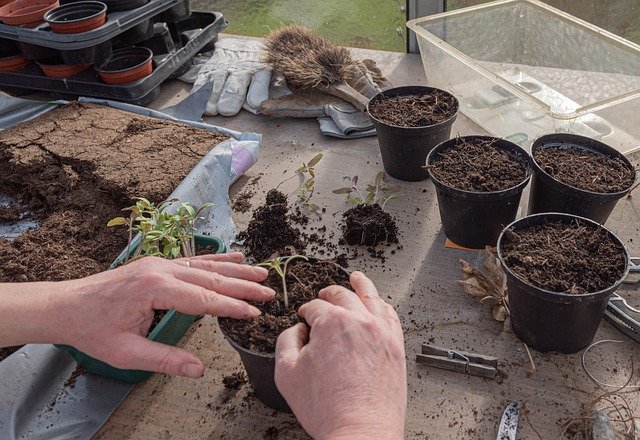
The type of potting soil used and the size of the pot can also affect the health of a Stingray plant. These plants prefer well-draining soil that is rich in organic matter. If the plant is root bound, it may not be able to absorb enough water and nutrients from the soil. Repotting the plant in a larger container with fresh soil can help alleviate this issue.
4. Low Humidity and Drafts
Stingray plants prefer high humidity levels and can become stressed or droopy in dry environments. To increase humidity, place a tray of water near the plant or use a humidifier. Additionally, drafts from air conditioning or heating vents can also cause the plant to droop. Avoid placing the plant in areas with direct drafts.
5. Slow Growth Rate and Rare Plant
Stingray plants are slow-growing and can be considered rare. It is normal for these plants to grow slowly, and they may only produce a few leaves per year. If the plant is not growing at all, it may be a sign of underlying issues such as poor lighting, overwatering, or root-bound conditions.
Feeding and Fertilization
Proper feeding and fertilization can help prevent Stingray plant drooping. Alocasia Stingray plants require a balanced diet of nutrients to thrive. They need a well-draining soil mix that is rich in organic matter and nutrients.
Fertilization is an essential part of Stingray plant care. A balanced liquid fertilizer that is high in nitrogen, phosphorus, and potassium can help keep the plant healthy and prevent drooping. It is recommended to fertilize the plant every two weeks during the growing season, from spring to fall.
When fertilizing, it is important to dilute the liquid fertilizer according to the manufacturer’s instructions. Over-fertilizing can cause root burn and damage the plant. It is also important to avoid fertilizing the plant during the winter months when it is dormant.
Stingray plants can benefit from liquid fertilizer, which is absorbed more quickly than granular fertilizer. Liquid fertilizer can be added to the plant’s water supply or sprayed directly onto the leaves.
In addition to liquid fertilizer, organic fertilizers such as worm castings or compost can also be added to the soil to provide essential nutrients. These natural fertilizers are slow-release and can provide a steady supply of nutrients to the plant over time.
Frequently Asked Questions
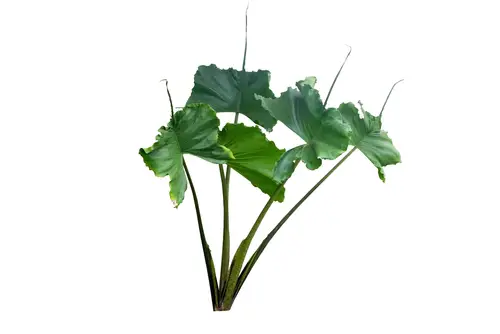
How do you stop Alocasia from drooping?
To prevent an Alocasia Stingray from drooping, it is important to ensure that it is getting the proper amount of water and humidity. Overwatering can cause root rot and lead to drooping, while under-watering can cause the plant to dry out and wilt.
Additionally, providing adequate humidity through methods such as misting or using a humidifier can help prevent drooping.
How do you revive an Alocasia Stingray?
To revive a drooping Alocasia Stingray, first make sure that it is getting the proper amount of water and humidity. If the soil is dry, water the plant thoroughly and allow excess water to drain out of the pot.
If the humidity is low, mist the plant or use a humidifier. Additionally, check for any signs of root rot and remove any affected roots. If the plant is severely wilted, consider cutting back any damaged leaves to reduce stress on the plant.
Will my Alocasia perk back up?
In many cases, an Alocasia Stingray will perk back up with proper care. However, if the plant has been severely damaged or the roots have rotted, it may not recover. It is important to monitor the plant closely and adjust care as needed to promote recovery.
How do you save a drooping plant?
To save a drooping Alocasia Stingray, identify the cause of the drooping and adjust care as needed. This may involve adjusting watering or humidity levels, removing affected roots, or cutting back damaged leaves. It is important to act quickly to prevent further damage to the plant.
Why is my Alocasia black velvet drooping?
A drooping Alocasia Black Velvet may be caused by a variety of factors, including overwatering, underwatering, low humidity, or pests. Check the plant for signs of root rot or pests, and adjust care as needed to address the issue.
Should I cut off drooping Alocasia leaves?
If an Alocasia Stingray leaf is severely wilted or damaged, it may be necessary to cut it off to reduce stress on the plant. However, if the leaf is only slightly drooping, it may recover with proper care. Monitor the plant closely and adjust care as needed to promote recovery.

Hey, I’m Lisa and I’ve been an avid gardener for over 30 years. I love writing, talking and living in the garden! Feel free to connect with me on my socials below

